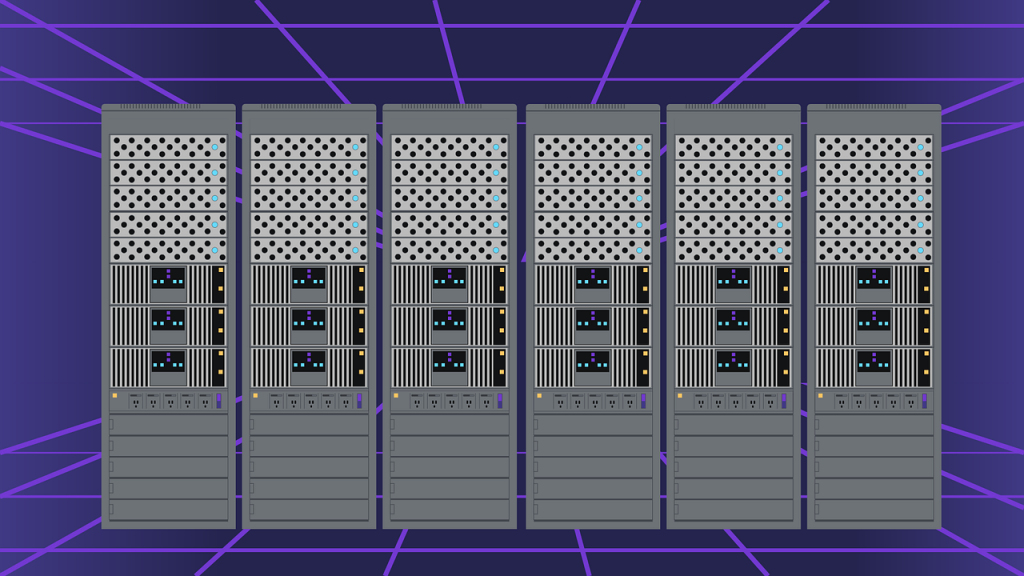In most businesses, the range of equipment is not limited to one computer. Even if we’re talking about small or home-based businesses, it requires a small server system to implement certain computing tasks and provide reliable data storage. Thus, if you want to develop a full-fledged business, you can’t go without a server system.
Here, the next question arises. How and where to accommodate hardware at home or a small office? Any system comprises at least one server, switches, patch panels, dozens of cables, and other accompanying accessories. So, even a small system takes up lots of space. And if we’re talking about home-based businesses, then, children or pets can harm expensive equipment.
Types of Furniture Pieces for Small Offices or Homes
Due to the specifics of small premises, compact models should be chosen. Thus, the most optimal kinds of bodies for storing hardware include:
- Wall-mount racks and cabinets
The main benefit of such products is that they provide excellent ergonomics. Wall-fastened models allow for solving the problem of small premises and allocate space effectively. By fastening an open frame server rack or an enclosed cabinet to the wall, you’ll free floor space and be able to use the room more effectively.
Here, two types of constructions are distinguished, namely:
- open-frame racks;
- enclosed cabinets.
If you need to protect network equipment from external impact and prevent possible damage (both accidental and intentional), it is better to use solid enclosures. Usually, such models have side panels and lockable doors to keep devices safe. To compensate for the lack of air conditioning, side walls and doors are perforated.
Open-frame designs are suitable for premises, where no third parties can enter. They have better air circulation properties and ease of maintenance. Yet, as for security issues, such as office network rack lags behind.
Note that due to the installation features, the loading capacity of wall-mount models is limited. Dowels for fastening and cabinet constructions are designed to carry a particular weight. Thus, such models won’t be able to accommodate large systems with dozens of apparatus.
- Floor-standing
If you need to house lots of devices, then you should stick to the server furniture installed on the floor. Here, both enclosed and open-frame options are produced. The main benefit of such constructions is that they can accommodate more devices. More spacious models are available here. Moreover, most furniture pieces are equipped with casters, which makes cabinets movable.
- Acoustic
Note that computing equipment works noisily. When installed next to employees, noise can distract them and impede their performance. When used in living premises, noise will keep dwellers tense.
For such cases, special enclosed models with additional sound insulation are used. The walls of such products are made of special material that does not allow sound to go through walls, reducing the level of noise.
- Air-conditioned
Basically, all types of server furniture must be air-conditioned since insufficient cooling will lead to hardware overheating, malfunctioning, and downtime.
The thing is that some models provide sufficient cooling using the natural airflow (open-frame racks), while enclosed furniture pieces require the installation of additional fan systems to generate forced air circulation. Enclosures are produced with special tech holes for fan mounting.
How to Choose the Right Model of Server Furniture for Small Offices and Living Premises?
The preparatory process is rather complicated and responsible. Do not skip it. To select the best suitable model for your small room, follow the guide:
- Make a list of all the hardware to be placed inside the office network cabinet.
- Measure all devices and calculate the dimensions of the required furniture piece. Here, note an important remark. The height of server products is measured in units, where 1U is 1,75 inches. Thus, calculate the needed model correctly.
- When all calculations are made, add a quarter or even half of the required space to ensure sufficient air circulation and foresee future system enlarging. This will be the final size of the needed model. One of the main rules of all system administrators states to place devices inside racks loosely. Tight hardware accommodation will lead to heat exchange between functioning parts and overheating since the airflow will be hardened.
Skilled system administrators recommend making a 3D layout to see how the equipment will be allocated, how much space will be left, and how the air will circulate. The layout will visualize and simplify the process of proper server cabinet selection.
- When you’re done with calculations, find a suitable location for your rack. How do you want to position the rack? Will it be fastened to the wall or installed on the floor?
- Make sure that power sockets are located nearby to avoid routing wires throughout a room and using power extensions.
- Check whether it is necessary to use a forced ventilation system. If yes, mark on the layout the place of fan installation.
- Remember that network hardware requires satisfying optimal environmental conditions. It is necessary to monitor and maintain proper humidity and temperature. It is not advisable to place server furniture close to heating and plumbing systems.
To summarize the article, let’s answer the question of what is the best server solution for small offices and home-based businesses. Here, the main thing is to decide how many devices are to be accommodated. Based on this information, the type of small network rack cabinet is chosen. If you need a compact model, then it is reasonable to use a wall-mount furniture piece to avoid cluttering floor space. If the system is rather big and heavy, then a floor-standing model is required. However, as practice shows, for home offices, it is enough to have a classic 6U or 9U wall-mount cabinet with several mounting rails and shelves to house all the needed equipment.
Also Read How Can I Choose a Server for a Small Business?





